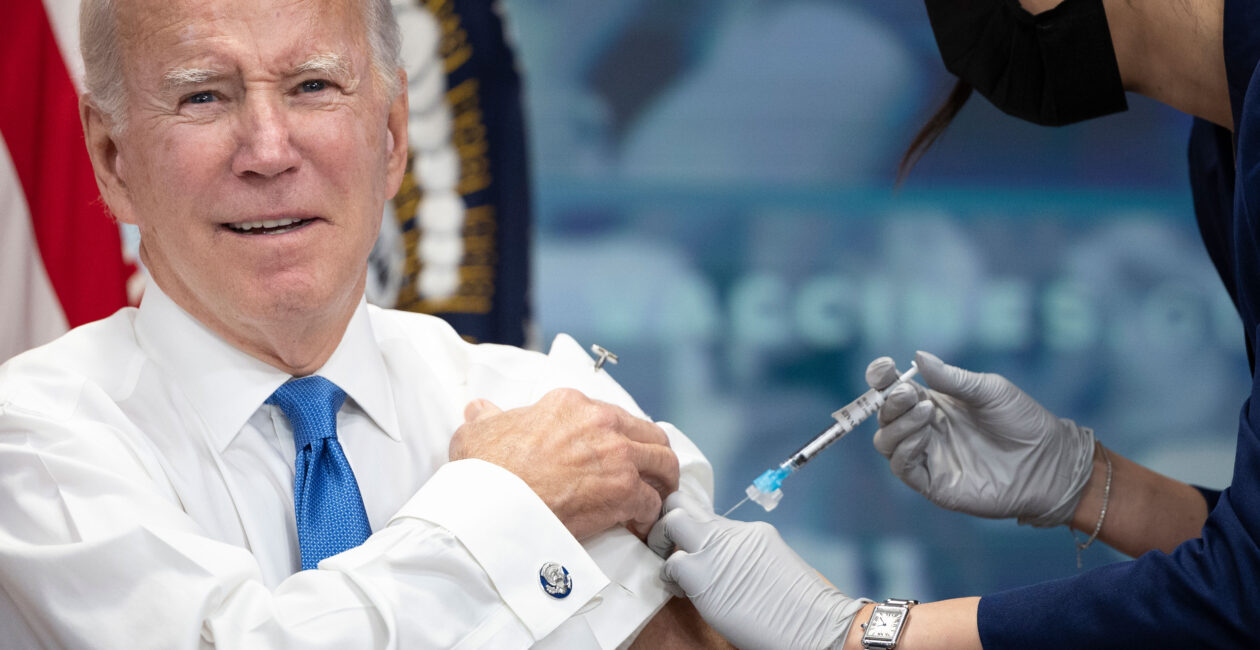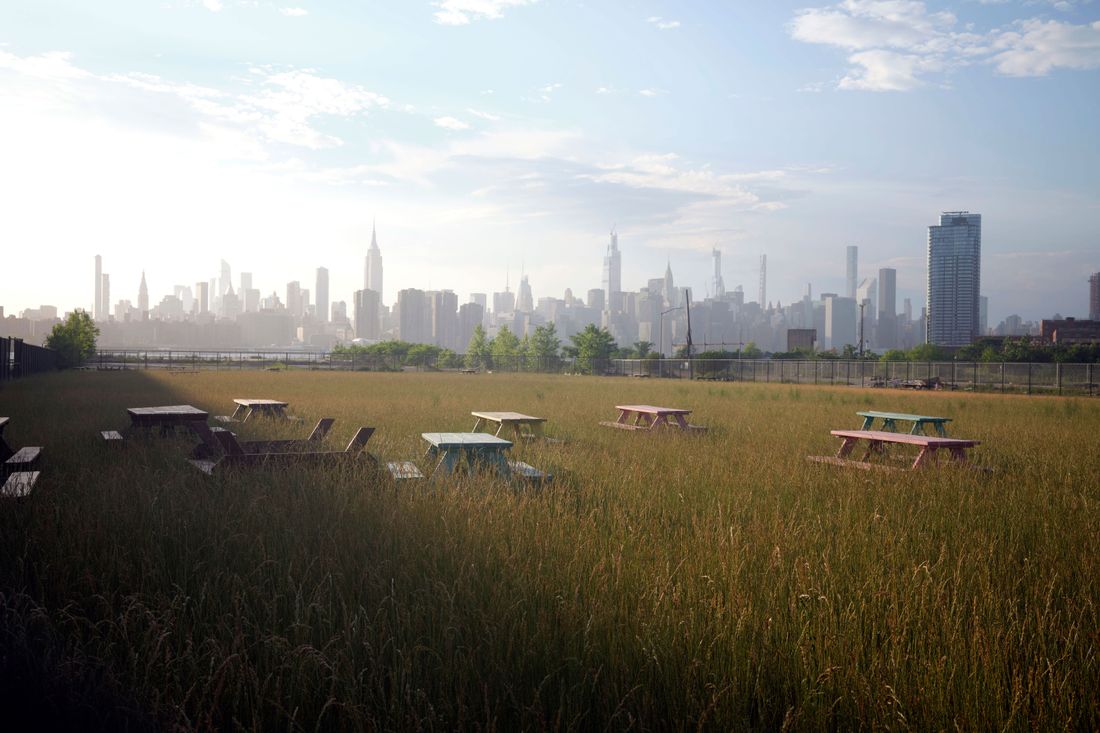 |
| Photo: Tom Brenner/The Washington Post/ Getty Images |
President Joe Biden was unable to overcome the judicial and legislative roadblocks to his full set of COVID-19 vaccine mandates two years ago, but the damage of that policy lingers.
If the Supreme Court and Congress had failed to block the mandates, the costly consequences of our COVID-19 crisis could have been worse.
Now we know why.
Last July, the highly productive House Select Subcommittee on the Coronavirus Pandemic, chaired by Rep. Brad Wenstrup, R-Ohio, conducted a hearing into the science and impact of the Biden administration’s vaccine mandates.
Biden, his congressional allies, and many medical societies insisted that these unprecedented government mandates were benign and beneficial. As Rep. Raul Ruiz, D-Calif., opined during the hearing, “I believe the vaccine is safe and effective. I believe it is the role of public health to vaccinate as many people as possible to prevent the spread of the virus.”
Well, it turns out that the robotic repetition of the “safe and effective” mantra deserves some sober qualifications. Over the past two years, there has been mounting evidence of adverse health consequences from the COVID-19 vaccines.
The simple fact is this: the COVID-19 vaccines, aiming to prevent grave illness and death, nonetheless can carry serious risks. As The New York Times recently reported, even among the elderly population, the prime candidates for vaccination, there are risks.
Based on preliminary research from the Food and Drug Administration and the Centers for Medicare and Medicaid Services, there’s a heightened risk of stroke when older patients received the vaccine at “the same time” as the flu vaccine.
According to the New York Times account: “Those who received both COVID and flu vaccines saw a 20 percent increase in the risk of ischemic stroke with the Pfizer BioNTech bivalent shot, and an increase of 35 percent in the risk of transient ischemic stroke after the Moderna bivalent shot. (The bivalent shots were replaced in September with new formulations.)” --->READ MORE HERE
 |
| Photo: JOHN TAGGART/The NYT/REDUX |
On April 8, 2020, the Chinese government lifted its lockdown of Wuhan. It had lasted 76 days — two and a half months during which no one was allowed to leave this industrial city of 11 million people, or even leave their homes. Until the Chinese government deployed this tactic, a strict batten-down-the-hatches approach had never been used before to combat a pandemic. Yes, for centuries infected people had been quarantined in their homes, where they would either recover or die. But that was very different from locking down an entire city; the World Health Organization called it “unprecedented in public health history.”
The word the citizens of Wuhan used to describe their situation was fengcheng — “sealed city.” But the English-language media was soon using the word lockdown instead — and reacting with horror. “That the Chinese government can lock millions of people into cities with almost no advance notice should not be considered anything other than terrifying,” a China human rights expert told The Guardian. Lawrence O. Gostin, a professor of global health law at Georgetown University, told the Washington Post that “these kinds of lockdowns are very rare and never effective.”
The Chinese government, however, was committed to this “zero-COVID” strategy, as it was called. In mid-March 2020, by which time some 50 million people had been forced into lockdowns, China recorded its first day since January with no domestic transmissions — which it offered as proof that its approach was working. For their part, Chinese citizens viewed being confined to their homes as their patriotic duty.
For the next two years, harsh lockdowns remained China’s default response whenever there was an outbreak anywhere in the country. But by March 2022, when the government decided to lock down much of Shanghai after a rise in cases in that city, there was no more talk of patriotism. People reacted with fury, screaming from their balconies, writing bitter denunciations on social media, and, in some cases, committing suicide. When a fire broke out in an apartment building, residents died because the police had locked their doors from the outside. And when the Chinese government finally abandoned lockdowns — an implicit admission that they had not been successful in eliminating the pandemic — there was a wave of COVID-19 cases as bad as anywhere in the world. (To be fair, this was partly because China did such a poor job of vaccinating its citizens.)
One of the great mysteries of the pandemic is why so many countries followed China’s example. In the U.S. and the U.K. especially, lockdowns went from being regarded as something that only an authoritarian government would attempt to an example of “following the science.” But there was never any science behind lockdowns — not a single study had ever been undertaken to measure their efficacy in stopping a pandemic. When you got right down to it, lockdowns were little more than a giant experiment.
Despite the lack of scientific evidence, lockdowns didn’t come out of nowhere, at least not in the U.S. They had been discussed — and argued over — by scientists since 2005, when (as the story goes) President George W. Bush read John M. Barry’s book The Great Influenza, about the 1918 pandemic. “This happens every hundred years,” Bush is supposed to have said after finishing the book. “We need a national strategy.”
In fact, there were people thinking about pandemic mitigation long before Bush read Barry’s book. The leader of this ad hoc group was D.A. Henderson, perhaps the most renowned epidemiologist of the 20th century — the man who, decades earlier, had led the team that eradicated smallpox. Richard Preston, the author of The Hot Zone, would later describe this feat as “arguably the greatest life-saving achievement in the history of medicine.” --->READ MORE HEREFollow links below to relevant/related stories and resources:
Here’s How Bad COVID-19 Is Right Now in Every State: Weekly Update
What 10 states are struggling the most to hire workers? See map.
USA TODAY: Coronavirus Updates
WSJ: Coronavirus Live Updates
YAHOO NEWS: Coronavirus Live Updates
NEW YORK POST: Coronavirus The Latest
If you like what you see, please "Like" and/or Follow us on FACEBOOK here, GETTR here, and TWITTER here.

No comments:
Post a Comment